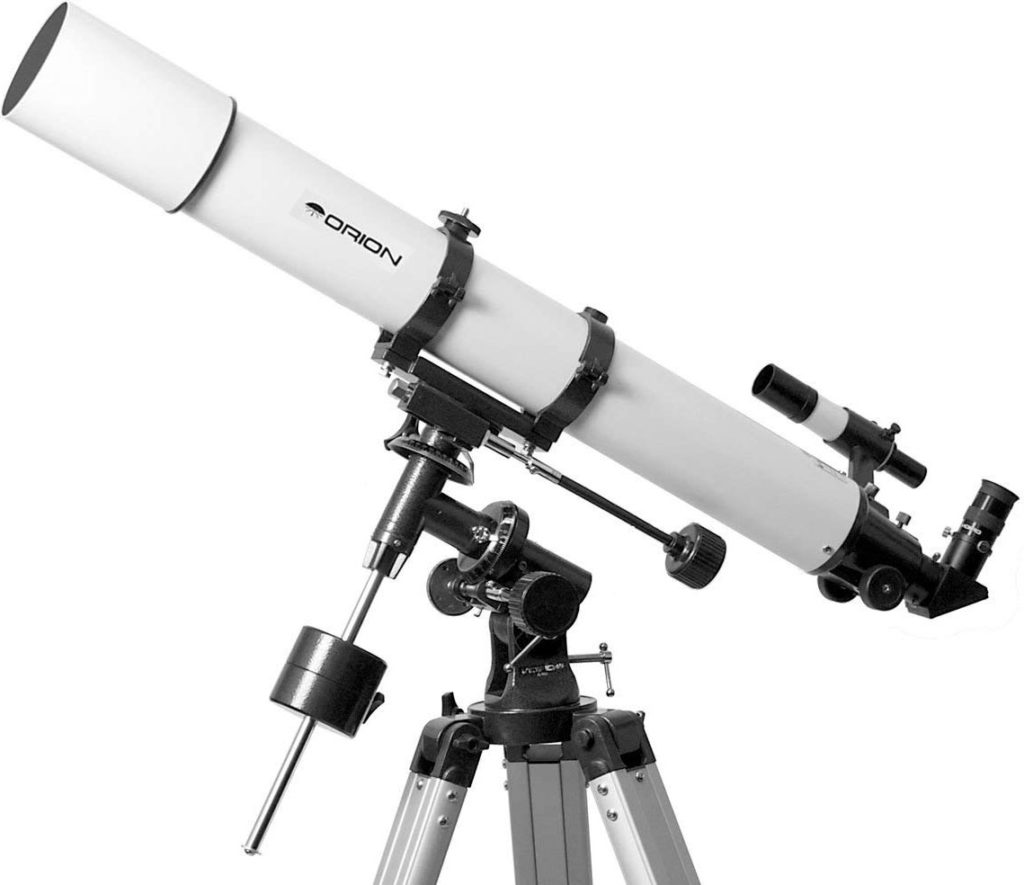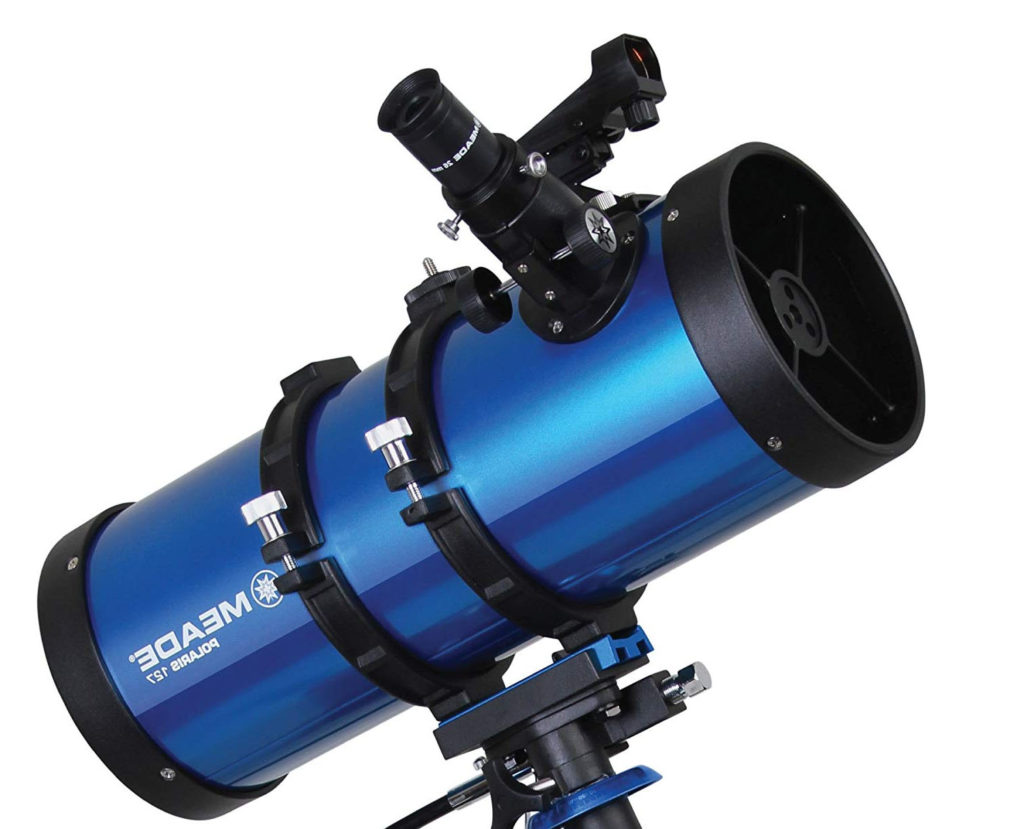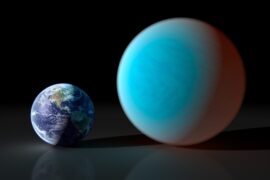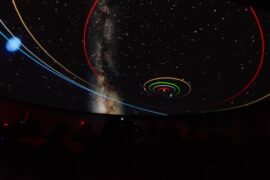Telescopes are a popular purchase both for yourself and as a gift for someone else. The problem is if you are new to the astronomy world buying a telescope can seem like an intimidating task. There are many specifications, types, price ranges and scientific terms that you need to understand so you can make the best choice and get the most bang for your money.
Most of the things you need to know, however, are not that hard to understand when you dig into it. Types of telescopes are one of these things. They have fancy and scientific names like “Newtonian” and “Refractor” but the truth is it is very easy to classify them and know the pros and cons of each so you can choose the one that best fits your needs.
Even though there are many types of telescopes, you could group most consumer and hobbyist models into three main groups: Reflecting telescopes, refractor telescopes, and compound telescopes. Each type is also often referred by other multiple names, for example, refractor telescopes can also be named Newtonian telescopes, but let’s try to keep things as simple as possible.
Let’s take a look at each type and their characteristics, advantages, and disadvantages.
Refracting Telescopes

Refractor telescopes, also known as dioptric telescopes were the first kind of telescope ever invented. Its invention is originally attributed to Hans Lippershey as he was the first person to apply for a patent for it. The design was later improved by Galileo Galilei who was the first one to use it for astronomy purposes.
Refracting telescopes are the most common type of telescope and probably the one you associate the most when you think of how a telescope looks like. The design uses a big lens at the front to capture the light that travels through a long cylinder. The original “Galelioscopic” design had the eyepiece in the same direction as the rest of the body but modern versions have a second lens that bumps the light to the eyepiece at the top.
The lenses for refracting telescopes are in turn divided into two main categories. Achromatic and Apochromatic. The details as to what each of them does differently are a bit technical but what you need to know if achromatic lenses tend to be cheaper but might generate what is called false color, while apochromatic lenses fix this issue for the human eye but not necessarily for astrophotography and tend to be pricier. Both types are widely used and honestly if you are a beginner and you are just looking to get your first entry-level telescope, you might not even notice a big difference between them, but if you are an experienced observer looking for the best image quality and your budget allows for it, apochromatic is the recommended way to go.
There are many other devices that use the same principles of refractors to work, specifically, other devices that can also be used for astronomical purposes like binoculars, monoculars and telephoto lenses for smartphones and cameras.
Let’s take a look at the pros and cons.
Pros
- Easy maintenance – The lens in a refractor telescope doesn’t require as much maintenance as the mirrors of a reflecting one and they don’t need to be collimated.
- Sturdier – Refracting telescopes also tend to be sturdier and made of harder, less delicate materials. This tends to increase their life expectancy and makes usually a better choice if you are hoping to carry it around in the car often when you go camping or stargazing.
- Easier to use – One often overlooked advantage of refracting telescopes is that by design they have the eyepiece at the bottom end of the telescope instead of at the top. This makes them easier to use for smaller kids who can look at them simply by standing up instead of having to use a chair or something to stand on like some of the bigger reflecting telescopes. For adults, this also allows them to use it while sitting on a chair instead of standing up, allowing for longer sessions of stargazing.
Cons
- Chromatic aberration – Achromatic refractors suffer from something called chromatic aberration which simply means that it can produce an inexact series of colors that can affect the quality of the images negatively. Apochromatic refractors solve most of this problem, but they tend to be way more expensive.
- Price – Because refracting telescopes are based on lenses and big lenses get expensive to make really fast, their price increases significantly with the size of the lens. While small refractors tend to be in the same price range as reflecting telescopes, but as they get bigger they tend to cost more per inch of aperture than the other types.
- Weight – Refracting telescopes tend to be longer and heavier, which might make them harder to transport and move around. If that’s an important consideration for you, make sure to check the weight of your telescope before you decide to buy.
Reflecting Telescopes or Newtonian Telescopes

In the last section, we mentioned how refracting telescopes suffer from chromatic aberration which reduces the image quality. This effect was even worse in the 17th century so a guy you might have heard of named Sir Isaac Newton decided enough was enough so he set out to make his own design for a telescope and this is how reflecting telescopes came to be. Sometimes they are also referred to as Newtonian telescopes after its inventor. They are also often called catoptric telescopes.
The main difference in the design of reflecting telescopes is the use of curved mirrors instead of lenses as the light-capture device. This allows building objectives of large diameters more easily which is why most of the big research telescopes, including the Hubble and the ones used at observatories, use this design.
While reflecting telescopes solve the problem of chromatic aberration, they are not perfect either and come with their own share of optical errors like coma, field curvature, and distortion. Some advanced and specialized telescopes use modified mirror surfaces or correcting lenses to solve these problems. Others can be fixed using image processing.
Because reflecting telescopes are the most popular for research, multiple variations of it have been designed. The most used ones are Gregorian, Newtonian and Cassegrain reflectors that vary where the mirrors are located, how the light travels through the body of the telescope and in the case of the Cassegrain, the use of a parabolic mirror.
Pros
- Bigger aperture – The mirrors in reflecting telescopes are easier to make in larger sizes. This helps these telescopes have larger apertures and gather more light. As we have mentioned in other articles, the aperture is the most important feature for a telescope.
- Better priced – Another benefit of using mirrors is Newtonian telescopes become more cost-effective. On average, if you only take aperture into account, reflecting telescopes are cheaper than refracting ones.
- Compact design – The smaller size of reflecting telescopes can make them ideal for travel, at least the ones with smaller apertures. Larger ones are better for home setups.
Cons
- High maintenance – The mirrors in Newtonians need to be professionally cleaned and recoated once in a while. How often depend on your specific telescope, check the user’s guide or manufacturer’s site for more details. The maintenance isn’t expensive but it is definitely necessary if you want to keep it in good shape.
- Collimation – The mirrors also need to be collimated often. Collimation means basically re-aligning the primary and secondary mirrors in your telescope. The process is pretty straightforward and you can do it yourself, but it takes sometimes. It might not be recommended to let a kid do it without supervision as they might break the mirrors or get them dirty.
- Coma – Have you seen photos where lights look like a small line instead of a dot or a circle? That’s an optic error called coma, because, well, they look like a comma. Some reflectors tend to have this problem.
Dobsonian Telescopes
One type of Newtonian telescope that deserves its own section is Dobsonians, or Dobs, for short. Dobsonians are named after their creator Joh Dobson, an amateur astronomer that came up with the design in the 1960s and popularized it.
Dobsonians are simply a bulky Newtonian telescope that mounted on a fixed base that is able to swivel in both directions. Dobsonians tend to be very low cost for the amount of aperture they offer but they also tend to be big and since they can’t be removed from the base, they are not practical and can be really hard to transport and move around. The design, however, is very simple which has made them very popular in the DIY telescope community as it is relatively easy to replicate.
Compound Telescopes

As their name implies, compound telescope, also referred to as catadioptric, mix some of the features from reflecting and refractor telescopes. Compounds use a mix of mirrors and lenses which lets them inherit the best of both worlds but also comes with some of the problems from each of them.
There are two main subsets of catadioptric telescopes: Maksutov-Cassegrain and Schmidt–Cassegrain. The difference between both is the size and types of mirror and lens that are used but the outer design is very similar. Both designs, especially the Maksutov solve most of the prevalent optic errors in reflecting and refractors.
Pros
- Compact size – Compound telescopes tend to be really compact, light and easy to carry. This makes them great for traveling, camping and bringing them outdoors.
- Great optics – Catadioptrics are designed to minimize the optical errors from the other designs.
Cons
- Price – In general, compounds tend to be on the expensive side of the price spectrum, they are considerably more exp[ensive than reflecting telescopes for similar apertures.
- Collimation and maintenance – Because they use mirrors, compounds also have the high maintenance of reflecting telescopes. The mirrors need to be collimated although not as often as in reflectors.
Non-consumer telescopes
Telescopes can also be used to gather data outside the electromagnetic spectrum that is visible by our eyes. For example, there are specialized telescopes that are used to analyze infrared and ultraviolet wavelengths, gamma rays, x-rays, and even radio signals. These telescopes help astronomers study the chemical composition, temperatures, and composition of distant stars and other objects.
These types of telescopes are not really produced for consumers and even if they were it would be difficult for you to even do anything them. For example, X-ray telescopes cannot be used from Earth because the atmosphere is in the way and it is opaque to x-rays so they have to be launched on high-altitude rockets.
So which one should I choose?
If you just want a straight up answer on which telescope you should pick, there are a couple rules of thumb you can follow although depending on your budget and needs they could change:
For kids: Refracting telescopes due to low maintenance and ease of use.
For first-time buyers: Reflectors. Good prices, will teach you a lot.
For experienced stargazers: It depends on what you are looking for and your budget.
Enjoyed this article?
Get daily 10-minute PDFs about astronomy to read before bed!
Sign up for our upcoming micro-learning service where you will learn something new about space and beyond every day while winding down.







